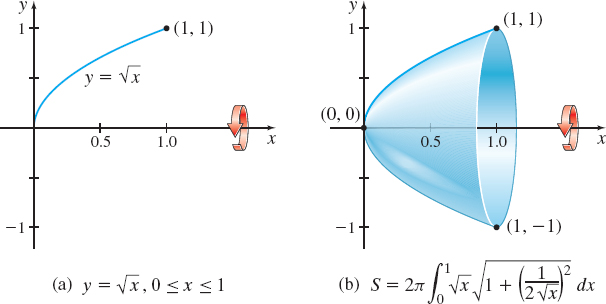EXAMPLE 2Finding the Surface Area of a Solid of Revolution Obtained from a Rectangular Equation
Find the surface area of the solid generated by revolving the curve represented by y=√x, from x=0 to x=1, about the x-axis.
Solution We begin with the graph of y=√x, 0≤x≤1, and revolve it about the x-axis, as shown in Figure 23.
We use formula (3) with f(x)=√x and f′(x)=12√x. The surface area S we seek is

The surface area of the solid of revolution is π6(5√5−1)≈5.330 square units.
